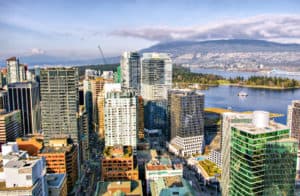
Sponsored Content
Renting an apartment in Toronto as a new immigrant can be overwhelming, but with the proper knowledge and helpful tips, you can find a suitable place to live. Selecting your preferred living area is an important decision impacting your quality of life. There are several factors to consider when choosing where to live, which can vary depending on your preferences and circumstances.
Here’s a first-time renter’s guide for new immigrants in Toronto.
Budget
Before you look for apartments, determine your budget—factor in rent, utilities (hydro, water, and gas), renter’s insurance, internet, transportation, groceries, and other expenses. Budget accordingly for your new place. Some buildings may include certain utilities in the rent, so clarify this with the landlord. For instance, in a bustling city like Toronto, if your rent includes parking, you could potentially save a significant amount of money each month.
Be prepared to pay the first and last month’s rent upfront as a standard practice in Toronto.
Research the cost of living in the area, including housing costs, groceries, transportation, and other expenses.
Preferred living area
Toronto is a vast city with diverse neighborhoods. Research different areas to find one that suits your lifestyle, commute, and budget. The city has an extensive public transit system, including buses, streetcars, and subways. Consider proximity to public transportation when choosing a location to ease your daily commute.
The website liv.rent advises prospective renters to walk around the neighbourhood they are considering to learn about the area, services, and amenities. You could check out the proximity of grocery stores, schools, healthcare facilities, and recreational areas in the neighbourhood.
Some new immigrants prefer neighbourhoods with a high concentration of their compatriots. If that is your preference, tailor your search accordingly.
Picking a rental that suits your lifestyle
Finding the perfect rental may take time, but if you’re patient and keep searching, you’ll find the right place.
Once you’ve decided on the location, search for a preferred living space. Before moving in, inspect the apartment thoroughly with your landlord and document any pre-existing damage. The inspection will protect you from liability when you move out.
Many Toronto rental buildings offer gyms, pools, and laundry facilities. Consider whether these amenities are important to you.
Search resources
Use websites and apps like Realtor.ca, Kijiji, Craigslist, Zillow, PadMapper, and Zumper and dedicated rental websites in your apartment search. These platforms give you a range of choices that allow you to filter listings based on your preferences. The sites will also give you a fair idea of what to expect.
Consider hiring a real estate agent or realtor who can help you find suitable listings. They can help you find suitable properties and navigate the rental process. Social media is also a great way to connect with other renters who may offer advice. Online forums also help you learn from the experiences of others and get recommendations.
Connect with local immigrant support organizations, and social groups to gain insights into the rental process and receive advice from fellow immigrants.
Stay vigilant against potentially fraudulent activities
Renting an apartment in a city like Toronto can be competitive and potentially risky, as scammers often target renters. A new immigrant is an easy target because of their limited knowledge of their new country. To protect yourself from rental scams, here are some tips to keep in mind:
Start your search with reputable sources like trusted real estate websites, rental websites, or property management companies. Visit the apartment in person before making any commitments and be wary of landlords or agents unwilling to show you the property or ask for money before allowing a visit.
Be cautious about landlords or agents who insist on wire transfers or cash payments. Reputable landlords typically accept payment methods that can be traced, like cheques or electronic transfers.
It could be a red flag if the rent seems unusually low for the area or the property. Scammers often use enticing prices to lure victims. Trust your instincts and proceed with care if something feels off or too good to be true.
Be alert for common red flags such as requests for upfront fees, landlords claiming to be out of the country, a lack of documentation, or poor communication. If you suspect a rental listing is a scam, report it to local authorities or the Canadian Anti-Fraud Centre. Ensure all agreements, terms, and conditions are documented in a lease agreement.
The website getwhatyouwant.ca warns Craigslist and Kijiji are popular for finding an apartment but are also known for scams.
Get prepared for the application procedure
When applying for a rental, have your documentation ready. This typically includes photo ID, proof of income (pay stubs or employment letter), and references. A credit report may also be requested.
Toronto’s rental process typically involves:
- Filling out an application.
- Paying a deposit (usually equivalent to one month’s rent).
- Signing a lease.
Familiarize yourself with the Residential Tenancies Act of Ontario. Know your rights and responsibilities as a tenant.
When you find a place you like, be prepared to fill out a rental application. Include references, proof of employment or income, and a credit check.
Review the lease agreement carefully before signing. Ensure you understand all the terms and conditions, including rent increases, maintenance responsibilities, and lease duration.
According to arrivein.com, newcomers who have not found employment can show sufficient funds to cover more than a couple of months worth of rent or provide a local guarantor or co-signer. If you have no credit report, a letter from the bank or bank statements that show sufficient funds to cover more than a couple of months worth of rent could be acceptable.
Checklist for moving in.
Moving into a rented apartment can be exciting but hectic. This guide will help minimize stress, stay organized and ensure a smooth transition into your new rented apartment.
Setting up services
Set up utilities such as electricity, gas, water, sewage, internet, and cable TV in your name. Confirm the start date for each service. Make a list of what you need and acquire necessary furniture and appliances if the landlord does not provide them. Ensure you stock up on cleaning supplies for move-in day.
If using a moving company, book their services well in advance. Get quotes from different companies to find the best deal. Start packing your belongings, labelling boxes with their contents and the room they belong to.
Moving Day
You’ve signed the lease, received the keys, and transferred the utilities. It’s time to move in!
Create an inventory list of your belongings as you move them into the apartment in case of damage or loss. Ensure all the utilities are functioning correctly. Remember to test smoke detectors and replace batteries if necessary. Check door locks and ensure you have spare keys.
Familiarize yourself with how to request maintenance or repairs from the landlord or property management. Set up a system to ensure timely rent payments.
Keep copies of your lease, move-in inspection, and any communication with your landlord in a safe place.
Enjoy your new home.









